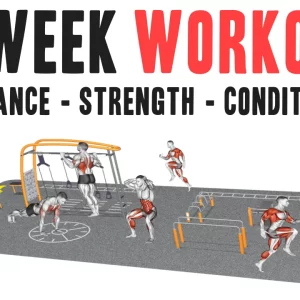Contents
In the world of boxing, the ability to deliver powerful punches, withstand an opponent’s assault, and maintain peak performance throughout a match is a testament to both physical prowess and mental fortitude. Strength and endurance are two cornerstones of a successful boxer’s skill set, and mastering these attributes can mean the difference between victory and defeat in the ring.
Strength provides the foundation for explosive punches, stability, and the ability to dominate the fight. Endurance, on the other hand, ensures that a boxer can maintain a high level of performance for the duration of a match, regardless of its length. When combined, these attributes create a formidable boxer capable of outlasting and overpowering the competition.
The right exercises play a pivotal role in a boxer’s journey to achieve and maintain optimal strength and endurance. This comprehensive guide will delve into the top 10 boxing exercises that have been tried and tested by professionals and amateurs alike. By incorporating these exercises into your training regimen, you’ll not only bolster your physical capabilities but also gain a competitive edge in the demanding world of boxing. Get ready to unleash your inner champion and maximize your boxing potential with these effective exercises.
Top 10 Boxing Exercises to Build Strength and Endurance
Whether you’re a seasoned pugilist or just stepping into the ring for the first time, understanding and incorporating these top 10 boxing exercises for strength and endurance into your training regimen can be the key to unlocking your full potential as a boxer.
The following top 10 boxing exercises will help boxers of all levels achieve their goals by enhancing both strength and endurance, ensuring they are in the best possible shape when they step into the ring.
1. Jump Rope
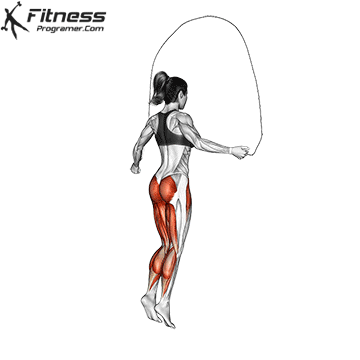
Jumping rope is a high-intensity aerobic exercise that elevates your heart rate rapidly. This sustained increase in heart rate is a fantastic way to boost cardiovascular endurance. As a boxer, having strong cardiovascular endurance means you can maintain your energy levels throughout a fight, stay agile, and recover faster between rounds. Here’s how jump rope helps:
- Increased Heart Rate: Jumping rope increases your heart rate, making your heart pump blood more efficiently and improving its overall endurance. Over time, this helps reduce the risk of fatigue during fights.
- Enhanced Lung Capacity: Jump rope forces you to breathe deeply and rhythmically, which increases your lung capacity. Improved lung function means your muscles get more oxygen during intense rounds, reducing the likelihood of becoming winded.
Remember to start slowly if you’re new to jumping rope and gradually increase the intensity and duration as your fitness level improves. Jump rope is a versatile and cost-effective tool for boxers of all levels to enhance their endurance and overall performance in the ring.
2. Shadow Boxing

Shadow boxing is a foundational training exercise in the world of boxing, and it offers a multitude of benefits, particularly in improving form and technique.
Shadow boxing allows you to repetitively practice your boxing techniques, such as punches, footwork, and defensive maneuvers, without the resistance of a partner or heavy bag. This repetition helps develop muscle memory, ensuring that your movements become second nature during actual bouts.
Value of Shadow Boxing in Improving Form and Technique:
- Improves Balance and Footwork: It’s an excellent opportunity to work on your footwork and balance. You can focus on proper weight distribution, pivoting, and moving around the “ring,” all of which are crucial for maintaining stability and evading opponents.
- Refines Punching Accuracy: Shadow boxing helps sharpen your punching accuracy and precision. You can visualize your target and work on hitting specific spots, helping you land cleaner, more effective punches during sparring or competition.
- Develops Defensive Skills: You can practice defensive maneuvers like slips, rolls, and blocks during shadow boxing, helping you become a more elusive and defensively sound boxer.
- Enhances Conditioning: Shadow boxing is a full-body workout that elevates your heart rate and helps improve endurance. It’s an integral part of conditioning, allowing you to train for longer durations and maintain a high level of intensity during fights.
Tips on Incorporating Shadow Boxing into Your Routine:
- Set Specific Goals: Focus on one or two aspects of your boxing technique during each shadow boxing session. This could be improving your jab, working on defensive movements, or practicing combinations.
- Use Mirrors or Record Yourself: Training in front of a mirror or recording your shadow boxing sessions can provide valuable visual feedback. You can identify areas for improvement in real-time and make necessary adjustments.
- Mentally Engage: Shadow boxing is not just physical; it’s also a mental exercise. Visualize an opponent in front of you and simulate real fight scenarios. Imagine counters and defensive actions as you move.
- Vary Intensity: Shadow boxing can be adapted to different levels of intensity. Use it as a warm-up, a cool-down, or as a high-intensity workout. Adjust the speed and power of your punches accordingly.
- Incorporate Footwork: Pay attention to your footwork and movement. Practice circling, cutting angles, and maintaining proper distance from your imaginary opponent.
Incorporating shadow boxing into your routine can significantly improve your form, technique, and overall boxing skills. It’s a versatile and essential tool for every boxer, from beginners to advanced athletes, helping you develop the fundamental building blocks of a successful boxing career.
3. Medicine Ball Slams
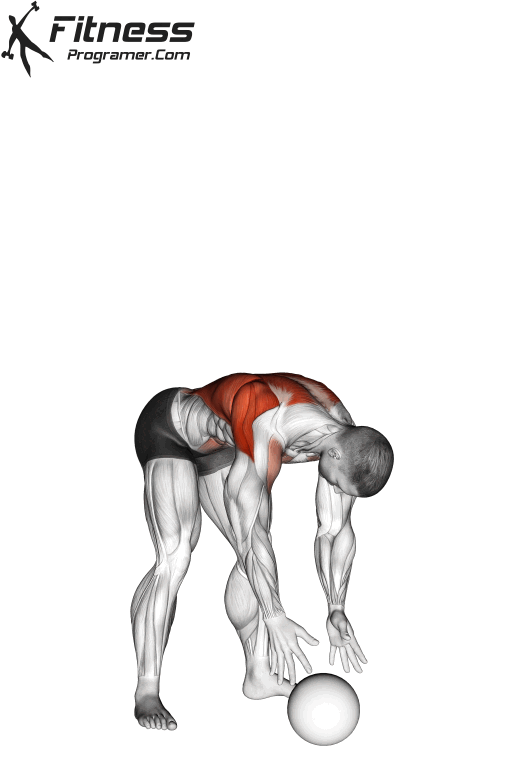
Medicine ball slams are a dynamic and explosive exercise that can be a valuable addition to a boxer’s training regimen. They are particularly effective for developing explosive power, a crucial attribute for generating forceful punches and quick movements in the ring. Here’s how medicine ball slams work to enhance explosive power and a guide to performing them with proper technique.
How Medicine Ball Slams Develop Explosive Power:
- Engages Fast-Twitch Muscle Fibers: Medicine ball slams require rapid, forceful movements. This engages your fast-twitch muscle fibers, which are responsible for explosive bursts of power. Strengthening these fibers is vital for generating quick and powerful punches in boxing.
- Full-Body Activation: Medicine ball slams are a full-body exercise that involves the legs, core, shoulders, and arms. This comprehensive engagement of multiple muscle groups helps develop a holistic explosive power that can be channeled into your boxing techniques.
- Enhances Core Strength: The slamming motion involves a strong contraction of your core muscles as you lift the medicine ball overhead and slam it down. A strong core is essential for maintaining stability and transferring power from the lower body to the upper body during punches.
- Improves Coordination and Timing: Properly executed medicine ball slams require coordination between your upper and lower body. This synchronization is crucial in boxing, where precise timing can mean the difference between landing a punch and missing the target.
Remember to perform medicine ball slams with proper form to minimize the risk of injury. It’s also advisable to consult with a fitness trainer or coach to ensure your technique is correct and to tailor your medicine ball slam routine to your specific boxing goals. Incorporating this exercise into your training can significantly enhance your explosive power, translating to more effective punches and movement in the ring.
4. Push-Ups

Push-ups are a time-tested and effective exercise that can significantly enhance upper body strength—a critical component of a boxer’s performance.
How Push-Ups Build Upper Body Strength:
- Chest and Pectoral Muscles: The primary muscle group targeted during push-ups is the chest or pectoral muscles. Strengthening these muscles is essential for generating powerful punches and maintaining a strong guard in boxing.
- Shoulders: Push-ups engage the deltoid muscles, helping improve shoulder strength. Strong shoulders are crucial for delivering jabs, hooks, and uppercuts with force and precision.
- Triceps: Push-ups work the triceps, which play a vital role in extending the elbow during punches. Strong triceps contribute to more potent strikes.
- Core Stability: To maintain a straight body during push-ups, your core muscles need to stay engaged. This helps in building a stable core, essential for balance and effective body movements in boxing.
- Serratus Anterior: Push-ups engage the serratus anterior, the muscles responsible for the protraction and stability of the scapulae. This engagement helps in maintaining good posture and shoulder health.
Push-Up Variations for Different Fitness Levels:
Diamond Push-Up |  |
Decline Push-Up |  |
Clapping Push-Up | 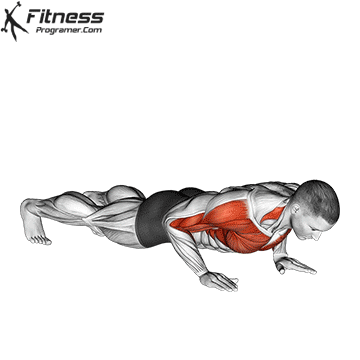 |
One-Arm Push-Up | 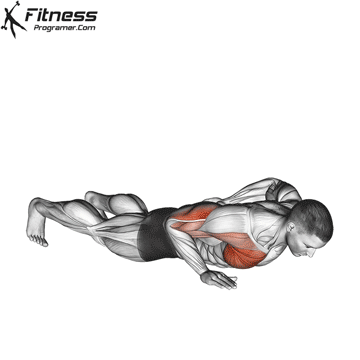 |
Cross Arm Push-up | 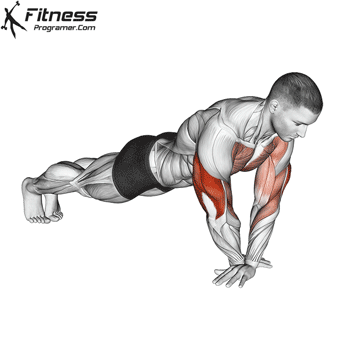 |
When incorporating push-ups into your boxing training routine, it’s essential to choose variations that match your current fitness level. Start with the basic push-up and gradually progress to more challenging variations as you become stronger. Push-ups are a versatile exercise that can be performed anywhere, making them an excellent tool for boxers to develop upper body strength, which is crucial for generating powerful and accurate punches in the ring.
5. Burpees
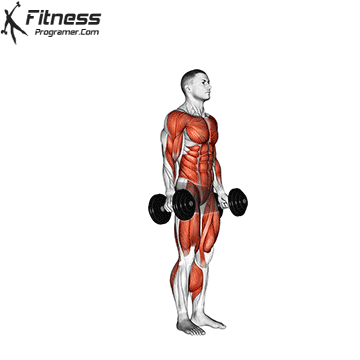
Burpees are a high-intensity, full-body exercise that can be a valuable addition to a boxer’s training regimen. They offer a myriad of benefits, including improving overall endurance and enhancing full-body strength.
How Burpees Improve Overall Endurance and Full-Body Strength:
- Cardiovascular Endurance: Burpees are a high-intensity, compound exercise that rapidly elevates your heart rate. This cardiovascular challenge helps improve your endurance, allowing you to sustain higher energy levels throughout a fight or training session.
- Muscle Engagement: Burpees engage multiple muscle groups simultaneously, including the legs, core, chest, shoulders, and arms. This comprehensive engagement enhances full-body strength, which is essential for generating power in punches and maintaining balance and stability in the ring.
- Explosive Power: The explosive jump at the end of each burpee builds lower body power, which can be harnessed for quick and forceful movements during boxing, such as jumping forward to close the distance on an opponent.
Including burpees in your boxing training can help you build the endurance and full-body strength necessary to excel in the ring. They are an efficient way to improve cardiovascular fitness and overall power, making you a more formidable and agile boxer.
6. Plank Exercises
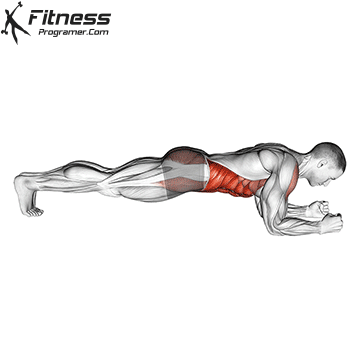
Core strength is a cornerstone of success in boxing. A strong core provides the stability, power, and endurance necessary for effective punching, defensive maneuvers, and overall performance in the ring. Plank exercises are among the most effective ways to build and maintain core strength.
Importance of Core Strength in Boxing:
- Stability and Balance: A strong core provides a stable foundation for all movements in boxing. It allows you to maintain balance while executing punches, slips, and pivots, reducing the risk of being off-balance and vulnerable to counterattacks.
- Power Transfer: Core strength plays a crucial role in transferring power from the lower body to the upper body during punches. A strong core enables you to generate more force behind your strikes, making them faster and more powerful.
- Endurance: Boxing matches can be physically demanding, requiring the ability to maintain form and technique over several rounds. A well-conditioned core ensures that you can sustain the intensity of your punches and defensive actions throughout the fight.
Incorporate a variety of plank exercises into your boxing training routine to build a well-rounded core strength that will translate into better boxing performance. Aim to progressively increase the duration or intensity of these exercises as you become more advanced. A strong core is the foundation upon which you can build your boxing skills and endurance in the ring.
7. Speed Bag Work

Speed bag training is a fundamental component of a boxer’s workout routine, offering numerous benefits, including improved hand-eye coordination and shoulder endurance.
How Speed Bag Training Enhances Hand-Eye Coordination and Shoulder Endurance:
- Hand-Eye Coordination: Speed bag training involves rapid, precise hand movements to strike the moving bag. This requires intense focus and coordination between your hand movements and your visual tracking of the bag. Over time, this repetitive coordination practice improves your ability to react quickly and accurately to moving targets, a crucial skill in boxing.
- Shoulder Endurance: The repetitive motion of striking the speed bag with both hands engages the shoulder muscles continuously. This endurance-based workout strengthens the shoulder muscles, allowing you to maintain proper form and technique in the later rounds of a fight when fatigue sets in. Strong shoulders are essential for delivering powerful punches and defending against opponents.
Tips for Beginners Trying Speed Bag Exercises:
- Start Slowly: If you’re new to speed bag training, begin at a slow and manageable pace. Focus on establishing a consistent rhythm and accuracy before attempting faster and more complex patterns.
- Correct Hand Position: Stand in front of the speed bag with your dominant hand (usually your strong hand) slightly behind your non-dominant hand. Your hands should be at shoulder height, with your elbows slightly bent. Keep your wrists relaxed.
- Practice Basic Rhythms: Start with basic rhythms, such as a simple one-two pattern where you strike the bag with your dominant hand followed by your non-dominant hand. Gradually increase the complexity of your patterns as you become more comfortable.
- Focus on Timing: The key to successful speed bag training is timing. Listen to the rhythm of the bag’s rebounds and coordinate your strikes to match the cadence. This will help you maintain a consistent flow.
- Use Controlled Movements: Avoid using excessive force or swinging your arms wildly. Instead, focus on controlled, short, and crisp strikes. Your movements should be efficient and controlled.
- Keep Your Eyes on the Bag: Maintain eye contact with the speed bag at all times. This will help you track its movement and react more accurately.
- Stay Relaxed: Tension in your arms and shoulders will hinder your performance. Keep your arms and shoulders relaxed, and use your wrists to control the strikes.
- Maintain a Consistent Beat: Work on keeping a steady and consistent beat. This rhythm will help you build muscle memory and coordination.
- Alternate Hands: Alternate between your dominant and non-dominant hands to ensure balanced development and coordination with both hands.
- Be Patient: Speed bag training can be challenging at first, but don’t get discouraged. With practice, your skills will improve, and you’ll notice significant enhancements in your hand-eye coordination and shoulder endurance.
Incorporating speed bag training into your boxing workout routine can be both fun and rewarding. It not only improves your hand-eye coordination and shoulder endurance but also adds variety to your training sessions. As a beginner, focus on building a strong foundation with the basics, and gradually progress to more advanced techniques as you become more proficient with the speed bag.
8. Squats
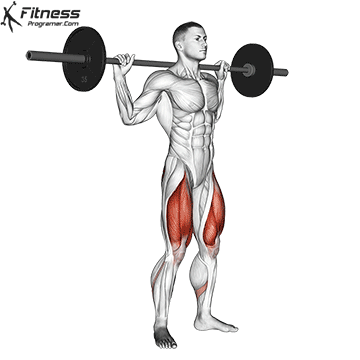
Squats are a fundamental strength training exercise that can be highly beneficial for boxers, as they help build leg strength—an essential component for generating power in punches.
How Squats Help Build Leg Strength for Power Punches:
- Targeted Muscle Engagement: Squats primarily target the muscles in your legs, including the quadriceps (front of the thighs), hamstrings (back of the thighs), glutes (buttocks), and calves. These are the muscles responsible for generating force and power in your lower body, which is crucial for transferring energy into your punches.
- Compound Movement: Squats are a compound exercise, meaning they engage multiple muscle groups simultaneously. This comprehensive muscle engagement allows for efficient and coordinated force production from the legs, translating to more powerful punches.
- Core Activation: Proper squat form necessitates core engagement for stability and balance. A strong core is essential for maintaining a solid base while throwing punches and helps prevent energy leakage during movements.
Incorporating squats into your training program can help develop the leg strength necessary for powerful punches and explosive movements in the ring. Be sure to prioritize proper form and gradually increase the weight or intensity as your strength improves.
9. Heavy Bag Work

Heavy bag training is a cornerstone of boxing workouts, providing numerous benefits for boxers, including improved strength and endurance.
Benefits of Heavy Bag Training for Strength and Endurance:
- Builds Full-Body Strength: Striking a heavy bag requires the engagement of multiple muscle groups, including the legs, core, shoulders, and arms. The resistance of the bag helps develop functional strength throughout the entire body, which is essential for generating power in punches.
- Enhances Cardiovascular Endurance: A heavy bag workout is an excellent cardiovascular exercise that elevates your heart rate and simulates the intensity of a boxing match. Regular sessions improve cardiovascular endurance, enabling you to sustain high energy levels during fights.
- Refines Technique: Practicing combinations and punches on a heavy bag allows you to refine your technique, accuracy, and timing. This translates to more effective and powerful punches in the ring.
- Improves Power and Speed: Heavy bag training enables you to work on the explosiveness of your punches. The bag’s resistance helps build power in your strikes, while rapid combinations develop speed and agility.
- Enhances Mental Toughness: Training on a heavy bag can be physically demanding and mentally challenging. It teaches discipline, mental fortitude, and the ability to push through fatigue—a vital aspect of boxing.
Remember to wrap your hands and wear gloves when training on a heavy bag to protect your wrists and knuckles. Start with shorter rounds and gradually increase the duration as your endurance improves. Tailor your heavy bag workouts to your fitness level and specific boxing goals, whether it’s improving technique, power, or overall conditioning. Consistent heavy bag training will contribute significantly to your boxing performance.
10. Hill Sprints

Hill sprints are a highly effective training tool for boxers, offering a unique combination of benefits, including the development of lower body strength and cardiovascular endurance. In this section, we’ll discuss the value of hill sprints and provide guidance on incorporating them into your boxing training routine.
Value of Hill Sprints for Building Lower Body Strength and Cardiovascular Endurance:
- Lower Body Strength: Hill sprints heavily engage the muscles in your legs, particularly the quadriceps, hamstrings, glutes, and calves. Running uphill against gravity requires a greater effort from these muscles, leading to increased strength and power in your lower body. This enhanced leg strength is vital for generating force in punches, improving stability, and optimizing movement in the ring.
- Cardiovascular Endurance: Hill sprints provide an intense cardiovascular workout. Running uphill elevates your heart rate quickly and sustains it throughout the sprint. This helps improve your cardiovascular endurance, allowing you to maintain a high level of performance during boxing matches, which often involve bursts of intense effort followed by brief periods of recovery.
- Explosive Power: The uphill nature of hill sprints necessitates explosive power with each stride. This explosive force development is directly transferable to quick movements and powerful punches in boxing, enhancing your ability to explode forward or backward with agility.
- Mental Toughness: Hill sprints can be physically demanding, requiring mental fortitude and discipline to push through fatigue and reach the top of the hill. This mental toughness can be invaluable in the ring, where perseverance and resilience are essential.
Incorporate hill sprints into your training routine 1-2 times a week, depending on your fitness level and overall training load. Consistent hill sprint workouts will not only build lower body strength and cardiovascular endurance but also enhance your explosive power and mental resilience, all of which are invaluable assets in the boxing ring.
Conclusion
By incorporating these exercises into your boxing training regimen, you’ll develop the strength, endurance, and overall fitness necessary to become a more formidable and successful boxer. Whether you’re a novice or an experienced fighter, these exercises will help you reach your boxing goals and elevate your performance in the ring. Remember, consistency and dedication are key to achieving lasting results.


